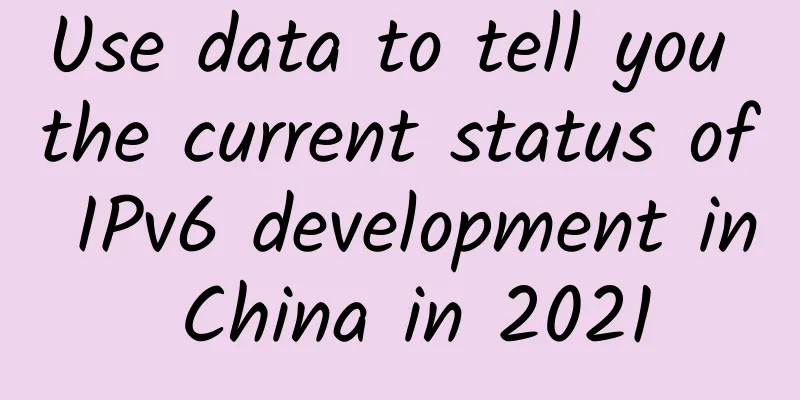If you unplug the SIM card, turn off the phone, and use a non-smartphone, the itinerary code will not know your whereabouts?

|
No matter you unplug the SIM card or turn off the phone, or use a non-smartphone, as long as you carry your phone with you, the operator can use the powerful big data to find out your movement track in a short time. In this way, the operator follows you everywhere and has a clear view of all your itineraries. How powerful is big data?You may have also wondered that when you have viewed something on your mobile phone and then open a shopping app, these apps will give priority to recommending the things you just viewed. For example, if you have stopped at a food video, related videos will continue to be recommended to you. This is the application of big data, which detects and analyzes your behavioral habits based on the APP in order to better cater to you. In fact, the "precise positioning" of operators' big data is more advanced. It can distinguish users, capture information about the websites or apps we have browsed, and even clearly know how much traffic is consumed. At the same time, operators can obtain information such as our daily calls, information exchanges, call duration, terminal preferences and consumption data. After capturing this data, the operators can analyze your age, gender, marital status, location, mobile phone brand and other information. It can be seen that people have "no privacy" under big data. How does the itinerary code know your whereabouts?1. Base station positioningBase station, abbreviated as BS, specifically refers to a public mobile communication base station. As the name suggests, the base station provides signals to mobile phones. As long as our mobile phones have signals, the base station is like the air, always surrounding us. We can also see that the strength of mobile phone signals varies in different situations. This is because the radiation distance of the base station is fixed. Normally, mobile phone signals are connected to the base station with the best signal in the surrounding area. At present, the base stations built by the three major operators basically cover the entire country. When we move with our mobile phones, the base stations we access will also change constantly, just like the base station B with a super strong signal, which steals the business from the base station A with a weaker signal. In any case, both base stations A and B will receive the mobile phone signal parameters and then analyze them through a series of professional codes to determine the location of the mobile phone. Base stations are the most basic and main way to locate mobile phones. The travel code (communication big data travel card) knows where you have been, mainly due to it. 2. Wireless network positioningThe wireless routers we commonly use are equivalent to a smaller version of the base station, and each router has a unique MAC address. When a mobile phone is successfully connected, the location information of the mobile phone will be fed back to the router terminal system. For example, if you always feel that your wireless network is slow, you can ask a professional to help you analyze the data. You can then find out who is stealing your Wi-Fi and blacklist him from the terminal. After that, he will no longer be able to connect to your Wi-Fi. 3. GPS positioningMobile phones generally have location information service functions, such as maps, location information, navigation, etc. These are all connected to the satellite navigation system in the sky. As long as the satellites in the sky are still there, the location information will inevitably be left. Base stations and wireless positioning are used to find out where you are, and there is a certain position deviation, while GPS positioning is very accurate, with an error of no more than 15 meters. When I was a kid, I used a satellite dish to search for signals and watch TV, which was GPS positioning. 4. Built-in positioningA person bought two mobile phones of the same model, thinking they were identical, but in fact they were different, just like twins, each with its own ID card. And every mobile phone is also given an "ID card" when it leaves the factory. This is the IMEI identification code of the mobile phone. The identification code is mainly composed of IMEI, MEID or S/N, which can achieve accurate distinction. It can be detected by the base station. After data analysis by the base station, your movement trajectory can be formed. Those who are interested can try it. Just enter <*#06#> on your phone’s dial key and you will see your phone’s unique identification code. From this it can be seen that even if you unplug the SIM card or turn off the phone, you have only escaped the base station signal positioning, wireless network positioning and GPS positioning. With some effort, professionals can still use the base station professional code to find the IMEI number identification code of your phone and then trace out your movements. Under what circumstances will the trip code not be recorded?1. New account opened within 14 days Considering the characteristics of the epidemic, the data collected by the itinerary code is the data of the past 14 days. Therefore, for mobile phone users who have opened their accounts for less than 14 days, no record will be generated on the itinerary code because the complete 14-day data cannot be collected. Of course, it will be available after waiting for another day. 2. Not staying in one area for more than 4 hours For example, I clearly took a bus from Nanjing to Ma'anshan, but there is no record of it. This is because when the itinerary code records the whereabouts, it needs to trigger the condition of staying for 4 hours. For example, I flew to Chengdu at 8 o'clock in the morning, and took the high-speed rail to Chongqing at 9 o'clock. I then stayed in Chongqing for a day. At this time, the itinerary code would not record that I stayed in Chengdu for only one hour, but would only record Chongqing. If I only go to the edge of Chongqing and the base station is in Chengdu, then the itinerary code will only record Chengdu and not Chongqing. 3. Theoretically, users can avoid being tracked by unplugging the battery and removing the SIM card at the same time. For some all-in-one devices where the battery cannot be removed, there is a possibility of being tracked even if the device is turned off. Simply unplugging the SIM card will only increase the difficulty of being tracked. From the moment the SIM card is inserted into the phone, the phone will connect to the base station signal to obtain the network by default. The base station will then obtain the ID information of the phone. Even if the card is removed, when the phone is turned on, the base station will determine whether there is a SIM card. As for whether the user can still see the exact location after turning off the phone, this is actually possible in theory, but it is not easy to do in practice. After the user turns off the phone, the base station signal to which the phone is connected can actually check the phone's location at that time. The safest way is to remove the battery of the mobile phone. When the mobile phone has no power supply, it is equivalent to cutting off contact with the outside world. However, since most mobile phone batteries on the market are non-removable, the operation is quite inconvenient. Under what circumstances will the trip code be recorded inaccurately?The travel code mainly relies on the mobile phone. If there is no signal base station coverage or the owner has defects, the travel code may deviate. 1. The visit was recorded even though the visit did not last more than 4 hoursIt is just like the edge of Chongqing mentioned above, but the data is recorded in Chengdu. Who says the base station signal in Chengdu is stronger than that in Chongqing? In the case of cross-coverage of base stations, the mobile phone will receive the base station with stronger signal. 2. People in China record their trips abroadEven tigers take naps sometimes, let alone operators facing more than one billion customers. Data shows that as of December 2021, there are more than 1.6 billion mobile phone users in my country, and each household may have access to a travel code. With such a large amount of data analysis, sporadic failures will also occur in the operators' servers. When the base station data is disordered, the wrong itinerary code can be transmitted. For example, if a person is in Yunnan, Vietnam will appear on the itinerary code. This phenomenon is mostly caused by temporary failures in base station signals or operator systems. 3. The person has not been to a medium- or high-risk area, but the itinerary code has an asteriskAfter all, the travel code can only locate city-level cities. For example, I have only been to Leshan City within 14 days and have not been to Emeishan City (Emeishan City is a county-level city under the jurisdiction of Leshan City). If Emeishan City belongs to a medium- or high-risk area, then an "*" sign will appear after Leshan City on the travel code. Leshan is about 36.8 kilometers away from Mount Emei. It is impossible for the epidemic to spread so far, and it is impossible for me to be quarantined. As long as I report truthfully, the asterisk will disappear by itself once Mount Emei City is downgraded to a low-risk area. Or if I leave Leshan and go to Chengdu, the asterisk on the itinerary code will disappear after 14 days. If the "asterisk" on the itinerary code still exists after 14 days, I can also call the communications service provider corresponding to my mobile phone to make adjustments. How can people who don’t have a smartphone know the itinerary code?If you do not have a smart phone, you can send a text message "CXMYD# the last 4 digits of your ID card" to your operator for inquiry (sending recipients: China Telecom 10001, China Mobile 10086, China Unicom 10010). If the machine is not issued with a personal ID card (one main card and multiple secondary cards), but you are using it yourself, you can send "CXMYD# the last 4 digits of the valid registration document corresponding to this machine" to query. From this it can be seen that even if you are using a non-smartphone, as long as you carry your phone with you, the operator can use the powerful big data to find out your movement trajectory in a short time. Of course, the phones for seniors are also very advanced now. One is the smart phone for seniors, which uses GPS and network positioning. The other is the keypad phone for seniors, which generally uses base station positioning. If you meet a programmer expert, you can easily call out the movement trajectory. In fact, with the deepening of epidemic prevention work, the application and query of health codes on behalf of others are now supported. If an elderly person over 60 years old or a child under 16 years old travels alone, they can ask passers-by to help check. Passers-by only need to enter the ID number of the elderly person or child on the relevant page of "Epidemic Prevention Health Information Code" on Alipay, and the health code will be displayed for 10 seconds. In addition, some cities and regions also support inquiries by swiping ID cards (such as Zhejiang) and citizen cards (such as Hangzhou) on some reading devices. |
<<: European and American telecom operators claim: No one needs 6G
>>: Higher bandwidth, faster bandwidth... Wi-Fi 6 is so "6", why not change your router soon?
Recommend
What exactly is 5G security and why is it important?
New technologies always bring with them a lot of ...
The sooner you know, the sooner you will benefit. What exactly is NaaS, which is about to become a trend?
X-as-a-Service offerings have been around for mor...
Are wireless networks more energy efficient than wired LANs?
Sustainability and reducing energy consumption ar...
“Unlimited” is just a cover. Which data card is the most cost-effective?
In order to use more affordable mobile data, I be...
IT spending priorities for 2020
The role of the CIO has become a transformational...
What is 5G Dual Connectivity?
This is a 4G base station, simple and clean. Howe...
Microsoft redesigns the calling interface in Teams
[[356857]] Microsoft Corp. has reportedly begun r...
Detailed family history: How the Internet has changed in the past decade
【51CTO.com Quick Translation】 Since its birth, th...
Top 10 acquisitions that changed the Internet industry in 2016
【51CTO.com Quick Translation】 In the Internet ind...
How does TCP ensure reliable transmission?
There are many factors in the network that may ca...
OneTechCloud VPS quarterly payment 20% off starting from 64 yuan/quarter, US CN2 GIA/CN2 High Defense/Hong Kong CN2/Japan CN2 and other lines
OneTechCloud is a Chinese hosting company founded...
Core technologies for building 5G networks: the differences and connections between SDN and NFV
We often hear network operators and equipment ven...
The property management company asked for 300,000 yuan as an “entry fee” for 5G to enter the residential area. The real problem is the problems beyond technology.
The 5G waves are rising higher and higher. In ear...
TCP access layer load balancing, high availability, and scalability architecture
Today, let’s have a systematic discussion about T...
What is UTP Cable?
The Internet plays a key role in our daily lives,...









